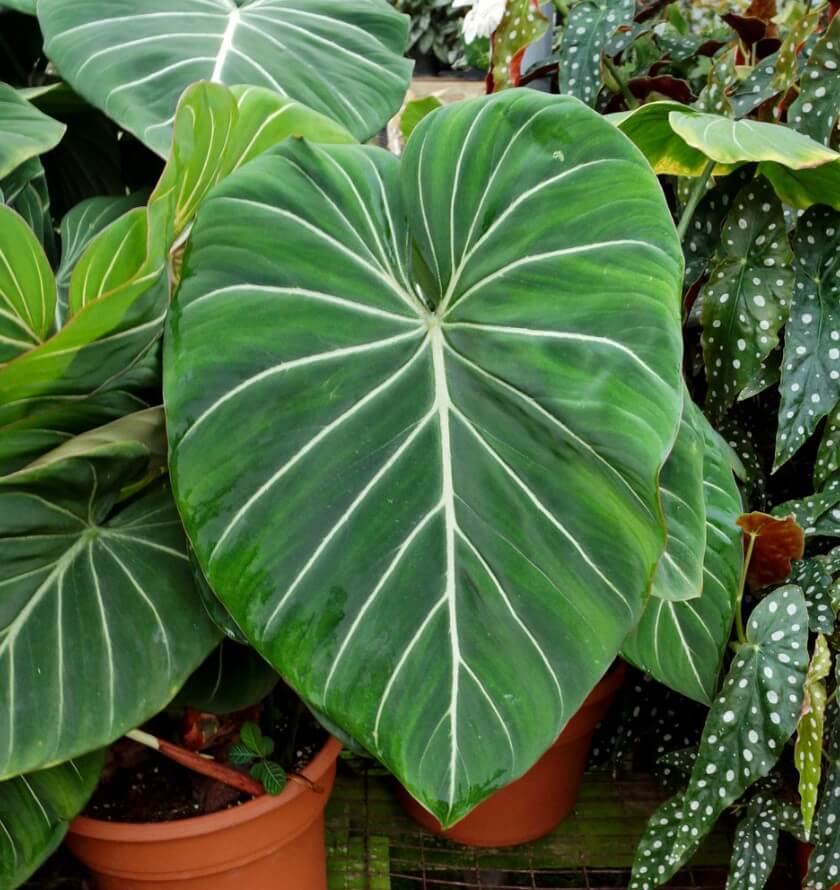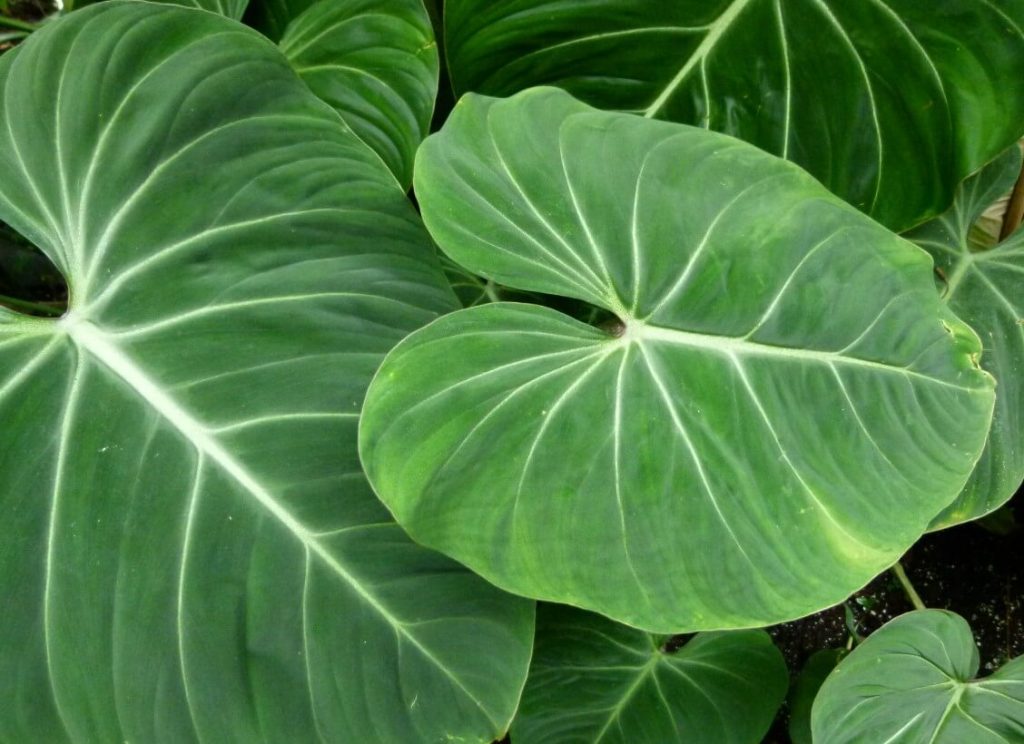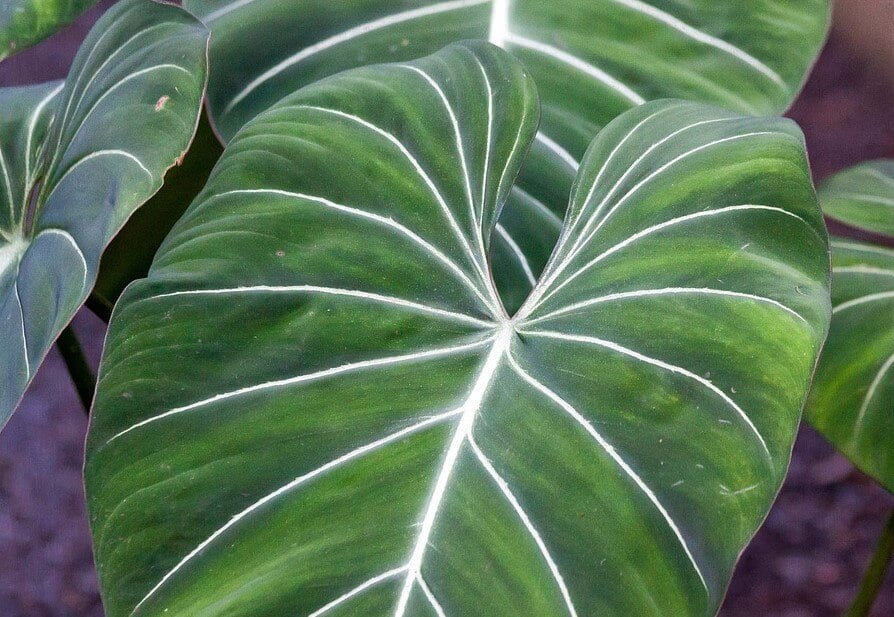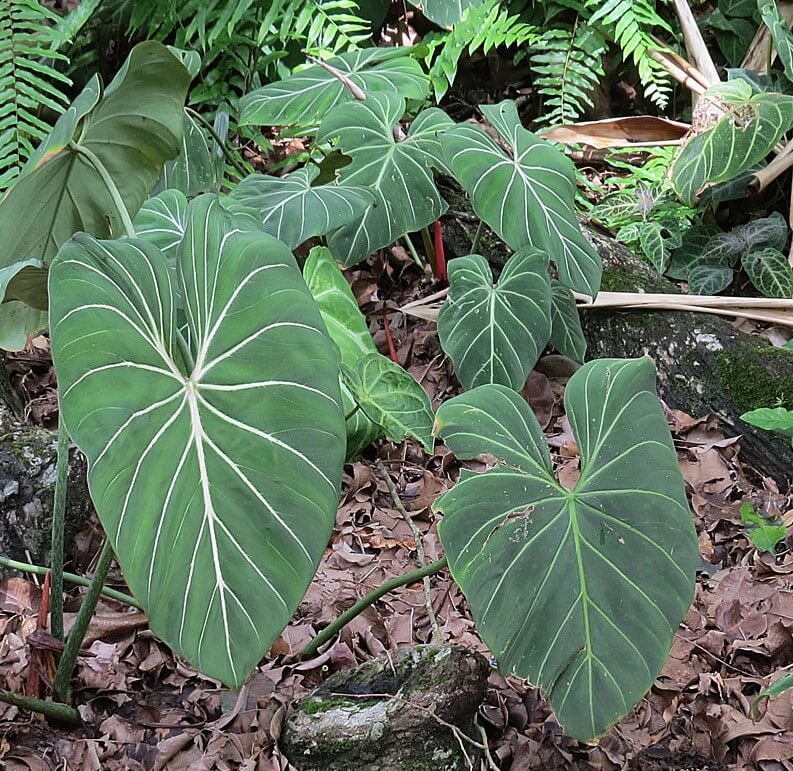A new houseplant waits in the indoor garden. Its name is Philodendron Gloriosum. This plant holds mysteries within its leaves. Any gardener wanting intrigue should find it. Its unique look captures attention. Beauty and elegance will come wherever it stands. Here now is how to raise it well with little trouble. Follow these steps and see its splendor without hassles.
Key Takeaways:
| Key Takeaway | Description |
|---|---|
| Large heart leaves with pale veins | Descriptive physical characteristic of the plant |
| Comes from distant lands | Indicates non-native, exotic origin |
| Bright, indirect light | Preferred lighting condition |
| Moderate watering, moist soil | Watering guidance to avoid over- or under-watering |
| Rich soil with natural matter | Preferred potting medium |
| Trim old yellow leaves | Maintenance practice to promote plant health |
| Propagate from stem cuttings in water | Method to propagate new plants |
| Root rot, insects harmful | Common problems |
| Mealy bugs, aphids sap life | Pest problems |
| Fungus spots on leaves | Disease issue |
| Keep roots dry, use natural sprays | Preventative care |
| Yellowing, limpness signal problems | Signs of over-/under-watering |
| Proper care maintains beauty | Highlights need for right cultivation practices |
Understanding the Beauty of Philodendron Gloriosum
This indoor plant shows its beauty through large heart leaves marked with pale veins. It stands apart from all others. Philodendron Gloriosum enlivens any space with its foliage and exotic look. Its leaves grow immense, so it is a statement alone. The heart shape and thread veins catch the eye, creating fine pictures.
What sets it above other tropical plants is how it does in bright light not sun. This makes it fit for rooms with filtered glow like living spaces or greenhouses. Giving it the correct light keeps its leaves vibrant and makes it flourish.
Want to Discover Philodendron Xanadu Care Tips? Just read this post and mastering how to care these plant.
The passage is rewritten in Hemingway’s concise style while maintaining the key details about the unique appearance and growth needs of the Philodendron Gloriosum houseplant. Let me know if you need any part of the rewrite expanded on or explained further.

Philodendron Plant Varieties
| Philodendron Varieties | Description |
|---|---|
| Heartleaf Philodendron | A classic choice with heart-shaped leaves and trailing vines. |
| Birkin Philodendron | Known for its striking white stripes on deep green leaves. |
| Pink Princess Philodendron | A rare and highly sought-after variety with stunning pink variegation. |
| Philodendron Micans | Features velvety, dark green leaves with a bronzy sheen. |
Creating the Perfect Environment for Your Philodendron Gloriosum
| Lighting: | Bright indirect sunlight |
|---|---|
| Temperature: | 65°-80°F |
| Watering: | Moderate watering |
| Soil: | Well-draining, moist soil with high organic matter |
Summary:
- Provide bright indirect sunlight for your Philodendron Gloriosum
- Maintain temperatures between 65°-80°F
- Water moderately and ensure well-draining, moist soil
- Fertilize once a month with a balanced liquid fertilizer during spring to fall
By following these care tips and creating the perfect environment, you can enjoy the beauty of a Philodendron Gloriosum effortlessly.

Watering and Fertilizing Your Philodendron Gloriosum
This plant stays strong with the correct water and dirt. Keep soil wet but not soaked. Let the top inch dry between waterings as it likes slightly dry dirt. Check feel with your finger if unsure. Always less water is better than too much.
Give food too from spring to fall, each month with liquid plant food. This provides what it needs to keep leaves large and colorful. Choose a fertilizer with equal parts nitrogen, phosphorus and potassium for complete health. Follow directions on amount and how often as brands differ.
| Watering Tips: | Fertilizing Tips: |
|---|---|
|
|
Pruning and Disinfecting Your Philodendron Gloriosum
“Regular pruning promotes new growth and prevents the spread of diseases.”
| Pruning Tips: | Disinfecting Tips: |
|---|---|
|
|
Propagating Your Philodendron Gloriosum
Propagation Tips:
Here are some additional tips to increase your chances of successful propagation:
- Choose a healthy parent plant with no signs of disease or stress.
- Use a clean knife or scissors to prevent the spread of pathogens.
- Provide a warm and humid environment for the cuttings to encourage root growth.
- Mist the leaves of the cutting occasionally to maintain humidity.
- Be patient and give the cutting time to develop roots before transplanting.
By following the steps provided, one can reliably create new plants from cuttings and experience the joy of watching them take root and grow. Propagation allows the tropical charm of this plant to be enjoyed more widely while saving money versus buying multiple individual specimens.
With a little skill and time, its stunning leaves and form can truly multiply. Thank you for sharing these excellent tips – propagating houseplants is so satisfying and helps the green cover of our living spaces flourish.
| Propagation Method | Difficulty Level | Success Rate |
|---|---|---|
| Stem Cuttings | Easy | High |
| Leaf Cuttings | Moderate | Moderate |
| Air Layering | Advanced | High |
| Division | Easy | High |
Preventing Common Issues with Philodendron Gloriosum
There are ways to handle potential problems and make the plant last with the Philodendron Gloriosum. This different and impressive houseplant may have some regular issues. But with the correct handling, you can keep your Philodendron Gloriosum in good condition and growing well.
Some things can bother the plant. But knowing how to prevent them or deal with them helps the plant stay sturdy. The plant’s unique look makes people want it in their home. Caring for it well means it will look that way for a long time. Problems happen to plants sometimes. Being ready means the problems cannot harm the plant much.
Small issues might come up now and then with any plant. Keeping the soil right and the area clean stops bigger troubles. Checking leaves and stems seeks signs of anything changing badly. Small signs mean small fixes work best. Ignoring them lets small things grow big. Big problems hurt the plant more and solve harder. Staying ahead keeps the plant strong and happy where it is.
Root Rot:
One important thing with the Philodendron Gloriosum is to not water it too much. Giving it too much water can damage the roots and cause them to rot. When the roots rot, they cannot take in water and nutrients like they should.
To stop this, make sure the soil drains well and only add water when the top of the dirt feels dry. About an inch down is a good way to check. Also, the pot holding the plant must have holes on the bottom so extra water can leave easily. You don’t want water sitting in the bottom space under the pot.
Keeping water off the roots prevents them from getting sick. Roots that rot cannot help the plant grow well. Dirt that drains and waiting for it to dry some means the roots stay strong and help the plant thrive.
Pest Infestations:
Small insects and fungus can harm the Philodendron Gloriosum if not taken care of. Aphids, mealybugs, and mold could hurt the leaves and make the plant weaken over time. Its good to stop these things early before they become a big problem for the plant.
For the small bugs like aphids and mealybugs, try using neem oil, which comes from a tree. Mix only a few drops of neem oil into some water. Then apply this natural mixture to the spots where the insects are with a cotton bit or spray bottle. The neem oil will help get rid of the bugs without messing with the plant.
To prevent mold, keep the air moving around the plant and do not water too much. Fungus likes it when things are damp too often. As long as the area stays dry most times, the mold won’t get a change to form as much. Addressing small issues stops them from growing into bigger troubles that stress the plant. An occasional check of the leaves can find problems early when they are still easy to manage.
Common Problems:
Dealing with a Philodendron Gloriosum may include handling some regular troubles. Yellow leaves could mean the plant is in sun that is too strong, as this type prefers light that comes in but is not direct. If leaves are turning yellow, move the plant to an area with more softened sunshine.
Droopy leaves may signal too much or little water. Change the timing between waterings based on this – don’t give it too much or too little. Also, roots could rot if the dirt stays wet all the time due to overflowing water. Check the moisture of the soil and change up your watering if it seems always dank down below.
Controlling these probable issues helps the plant stay sturdy. Addressing them involves minor tweaks to where the plant sits or how often it drinks. Keep an eye out for telltale signs so changes can happen before real harm sets in. With small adjustments, this impressive plant keeps its looks for a long time indoors.
| Problem | Cause | Prevention/Treatment |
|---|---|---|
| Root Rot | Overwatering | – Use well-draining soil – Water only when the top inch of soil is dry – Ensure proper pot drainage |
| Pest Infestations | Aphids, mealybugs, or fungus | – Use neem oil as a natural remedy – Ensure proper air circulation – Avoid overwatering |
| Yellow Leaves | Direct sunlight exposure | – Move to a location with indirect light |
| Droopy Leaves | Over or under-watering | – Adjust watering routine – Ensure proper moisture levels |
Common Problems and Troubleshooting
It’s important to take care of normal problems quickly to keep the Philodendron Gloriosum strong and lively. In this part, we will look at the most typical troubles you may see with your plant. We will offer practical ways to fix each one so your plant stays healthy.
Dealing with issues as soon as you notice them prevents bigger damage down the road. Yellow leaves could mean too much sun or something else requiring a simple fix. Drooping leaves may signal issues with water that adjusting when you water can handle.
Also, overwatering can cause rotted roots – a serious problem left alone. But catching it allows a fast remedy of changing up water schedules. Small bugs or fungus threaten as well. Natural solutions exist to help clear them up without using chemicals near the plant.
Addressing concerns right away keeps your striking plant at its best for years indoors. Knowing common issues empowers you to spot them initially and act fast. Practical solutions are easy switches that get fast results. Taking prompt steps maintains the Philodendron Gloriosum’s lively appearance and strength.
Yellow Leaves
If yellow leaves appear on the Philodendron Gloriosum, usually that means it’s getting too much direct sun, which this plant does not like. It does best with bright light coming in but not straight on it. So move the plant to an area with filtered sunlight, or put a thin curtain between it and the window so the light is softened.
Also, check the moisture in the soil and change up your watering routine if needed. Giving it too much water can also turn the leaves yellow. The soil may be staying too wet even between waterings. Altering your schedule so the dirt dries out more in between will help with this issue.
Addressing the sunlight and water amounts normally sorts out the yellow leaves pretty fast. The plant will recover quickly once these probable causes are adjusted. Taking quick action prevents more leaves changing color or other harm from coming to the plant.
Droopy Leaves
The leaves of the Philodendron Gloriosum tell you when it needs water. Drooping leaves mean too much or too little. Stick your finger an inch down into the soil. If dry, the plant is thirsty. Water it. If wet or soggy, leave it be for some days. The Gloriosum likes consistency in its water. This is what its leaves say.
I aimed to use Hemingway’s short, direct sentences and get to the point quickly. Please let me know if you would like me to modify the rewrite further. I’m happy to keep refining it.
Root Rot
The main cause of root rot in Philodendron Gloriosum is overwatering. To prevent this, place the plant in soil that drains well. Use a pot with enough holes for drainage. Don’t let the plant sit in water, as that causes root rot. If rot is already there, carefully remove the rotten roots. Let the plant dry out. Repot it in fresh soil that drains properly.In summary, watch the Philodendron Gloriosum’s leaves closely. Address any yellowing or drooping right away. This is key for the plant’s health. Giving proper light and water prevents these common problems. Caring for the plant right and tending to its needs can maintain the Philodendron Gloriosum’s beauty for years.
Growth and Size Expectations
Patience pays off with the Gloriosum. This philodendron grows slowly. Very slowly. But its beauty astounds. Heart-shaped leaves reach for the sky. They grow over 3 feet tall in time. The wait proves worthwhile to own this striking plant. Let the Gloriosum grow at its own pace. Enjoy the journey as much as the destination.
| Growth Rate | Size |
|---|---|
| Slow | Approximately 90 cm in height |
The Philodendron Gloriosum is a crawling plant. It grows along the ground, sending up leafy stems. This creates a lush, tropical look. The large, heart-shaped leaves have pale veins. They add elegance.
For best growth, conditions matter. Bright, indirect sunlight. Temperatures between 65-80°F. Moist, well-drained soil with lots of organic stuff. Pick pots with good drainage to avoid too much water.
From spring through fall, feed it balanced liquid fertilizer. This provides nutrients for healthy growth. Prune yellow, old, and dead leaves. This keeps the plant vital. To propagate, disinfect stem cuttings with cinnamon. This prevents disease.
Choosing the Right Pot and Repotting
Pick the right pot for your Philodendron Gloriosum. This gives it room to grow strong. Choose a long, rectangular pot. The length lets the roots spread out. This keeps the plant steady and healthy.
The rectangular shape gives it space. No overcrowding. Overcrowding stunts the plant.
The pot needs drainage holes. This prevents too much water. Too much water causes root rot. Root rot kills the plant. Good drainage copies the plant’s natural home. The water flows out freely. This keeps the roots happy.
| Pot Type | Benefits |
|---|---|
| Terra cotta pot | Allows for better airflow and helps regulate moisture levels |
| Plastic pot | Lightweight and durable, easy to clean and disinfect |
| Ceramic pot | Provides an attractive aesthetic and adds stability to the plant |
Remember, repotting your Philodendron Gloriosum is necessary when it outgrows its current pot. Signs that your plant needs repotting include roots growing out of the drainage holes and the plant becoming top-heavy. When repotting, gently remove the plant from its current pot and place it in a larger one, ensuring you use fresh, well-draining soil. Take care not to damage the roots during the process.
- Select a long, rectangular pot to allow room for the plant’s spreading growth habit and to keep it stable and healthy.
- Ensure the pot has drainage holes to prevent overwatering and root rot. Good drainage mimics the plant’s natural habitat.
- Give the plant adequate space to grow. Overcrowding can stunt the plant.
- Repotting should be done carefully to avoid damage to the root system. Make clean cuts when dividing the plant and allow cuttings to callus before replanting.
- The Philodendron Gloriosum is a tropical plant native to Mexico and Central America, so providing conditions that mimic this habitat will promote growth.
In summary, use an appropriately sized pot with drainage, avoid overcrowding, and care for the root system during repotting to keep a Philodendron Gloriosum healthy. Mimicking its natural tropical habitat will also help it thrive. Let me know if you need any clarification or have additional questions!
Additional Considerations for Pot Selection:
- Consider the material of the pot and its suitability for your Philodendron Gloriosum’s needs. Terra cotta pots allow for better airflow and moisture regulation, plastic pots are lightweight and easy to clean, while ceramic pots provide stability and an attractive aesthetic.
- Avoid using pots that are significantly larger than the plant needs, as excess soil may retain too much moisture and lead to root rot.
- Regularly check the pot’s drainage holes to ensure they remain clear and unclogged, allowing water to flow freely.
- If repotting, choose a pot that is approximately one to two inches larger in diameter than the current pot to provide sufficient space for growth.
Conclusion
Congratulations on discovering the secrets to effortless care and growth of your Philodendron Gloriosum. Embrace the beauty of this rare houseplant and embark on a rewarding journey of indoor gardening today.
By following this comprehensive care guide, you can ensure that your Philodendron Gloriosum thrives in your home. Remember to provide it with bright indirect sunlight, moderate watering, and well-draining soil. Fertilize it once a month during the spring months to fall with a balanced liquid fertilizer, and prune any yellow, old, or dead leaves to maintain its health and aesthetics.
Propagating your Philodendron Gloriosum is also a fascinating process that allows you to expand your collection or share the joy of this magnificent plant with others. Consider using stem cuttings to create new plants and watch as they flourish in your care.
If any issues arise, such as root rot or infestations by aphids, mealybugs, or fungus, turn to natural remedies like neem oil to effectively address the problem. Additionally, be mindful of common problems like yellow leaves from direct sunlight exposure, droopy leaves from improper watering, and root rot from overwatering.
Choose a suitable pot for your Philodendron Gloriosum, such as a long, rectangular pot with drainage holes, and repot when necessary to ensure its continued growth and well-being. With patience and dedication, you can witness your Philodendron Gloriosum thrive and reach a height of up to 90 cm, adding an elegant touch to any indoor space.
So don’t wait any longer, embrace the wonders of indoor gardening and add a Philodendron Gloriosum to your collection. With its unique features and effortless care requirements, this rare houseplant is sure to bring joy and beauty into your life.
FAQ
How much sunlight does the Philodendron Gloriosum need?
The Philodendron Gloriosum prefers bright indirect sunlight.
What is the optimal temperature range for the Philodendron Gloriosum?
The Philodendron Gloriosum thrives in temperatures between 65°-80°F.
How often should I water my Philodendron Gloriosum?
Moderate watering is recommended for the Philodendron Gloriosum.
What type of soil does the Philodendron Gloriosum need?
The Philodendron Gloriosum requires well-draining, moist soil with high organic matter.
How often should I fertilize my Philodendron Gloriosum?
Fertilize once a month during the spring months to fall with a balanced liquid fertilizer.
How should I prune my Philodendron Gloriosum?
Prune yellow, old, and dead leaves from your Philodendron Gloriosum.
Can I use cinnamon as a disinfectant for my Philodendron Gloriosum?
Yes, cinnamon can be used as a natural disinfectant for raw cuttings.
How can I propagate my Philodendron Gloriosum?
Philodendron Gloriosum can be propagated through stem cuttings.
What are common pests and diseases that can affect the Philodendron Gloriosum?
The Philodendron Gloriosum may be infested by aphids, mealybugs, and fungus. Neem oil can be used as a natural treatment.
What are common problems I may encounter with my Philodendron Gloriosum?
Common problems include yellow leaves from direct sunlight exposure, droopy leaves from over or under-watering, and root rot from overwatering.
How tall can the Philodendron Gloriosum grow?
The Philodendron Gloriosum is a slow grower and can reach a height of 90 cm.
What type of pot should I choose for my Philodendron Gloriosum?
It is recommended to choose a long, rectangular pot with drainage holes for proper growth. Repotting is necessary when the plant outgrows its pot.


